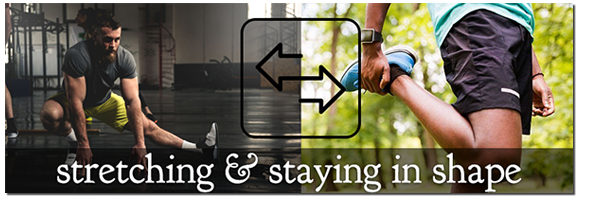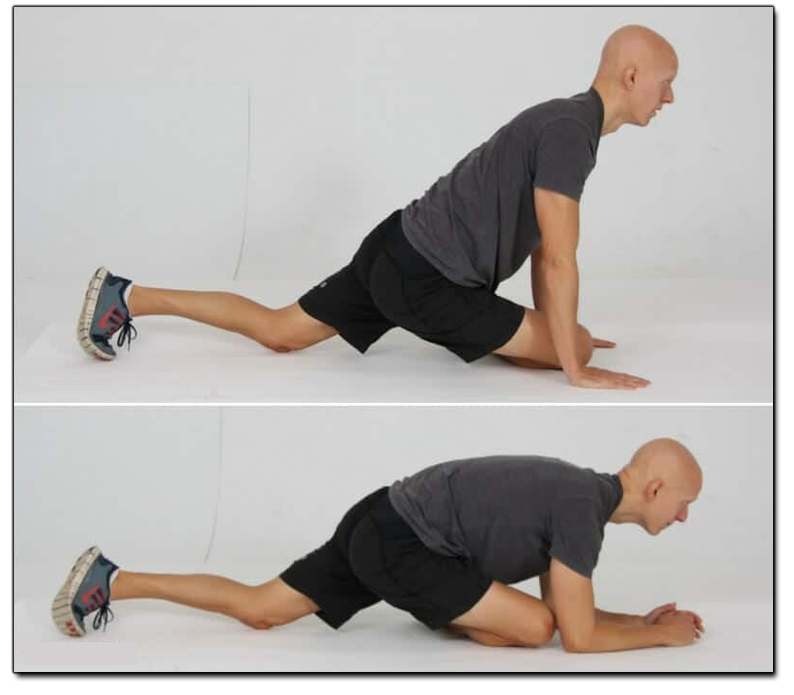Stretching and Staying in Shape in 2022
Access CIS March 2022 Newsletter and please be sure to submit your near misses!

We work in a physically challenging industry, it’s not enough to just build muscle you need to achieve an overall fitness and in doing that you need to think about flexibility, too. Stretching is one way that can help.
You may think of stretching as something performed only by athletes like runners or gymnasts. But we all need to stretch in order to protect our mobility and independence. A lot of people don't understand that stretching has to happen on a regular basis. It should be performed daily.
Why stretching is important
Stretching keeps the muscles flexible, strong, and healthy, and we need that flexibility to maintain a range of motion in the joints. Without it, the muscles shorten and become tight. Then, when you call on the muscles for activity, they are weak and unable to extend all the way. That puts you at risk for joint pain, strains, and muscle damage. Your reaction time to arm and leg movement is also diminished without exercise and stretching (Ex. Reacting to a fall). And stretching also improves general range of motion.
For example, sitting in a vehicle or a chair all day results in tight hamstrings in the back of the thigh. That can make it harder to extend your leg or straighten your knee all the way, which inhibits walking and when working on uneven surfaces this can be a dangerous situation. Likewise, when tight muscles are suddenly called on for a strenuous activity that stretches them, such as needing to move quickly away from something, they may become damaged from suddenly being stretched. Injured muscles may not be strong enough to support the joints, which can lead to joint injury.
Regular stretching keeps muscles long, lean, and flexible, and this means that exertion won't put too much force on the muscle itself. This will also help you with balance problems to avoid falls.

Where to start
With a body full of muscles, the idea of daily stretching may seem overwhelming. But you don't have to stretch every muscle you have. "The areas critical for mobility are in your lower extremities: your calves, your hamstrings, your hip flexors in the pelvis and quadriceps in the front of the thigh." Stretching your shoulders, neck, and lower back is also beneficial. Aim for a program of daily stretches or at least three or four times per week.
Sometimes you can find a gym with a physical therapist on staff who can assess your muscle strength and tailor a stretching program to fit your needs. If you have chronic conditions like arthritis, you'll want to clear a new stretching regimen with your doctor before you start.
The increasing effect of stretching
Stretching once today won't magically give you perfect flexibility. You'll need to do it over time and remain committed to the process. It may have taken you many months to get tight muscles, so you're not going to be perfectly flexible after one or two days. It takes weeks to months to get truly flexible, and you'll have to continue working on it to maintain it.
A hamstring stretch will keep the muscles in the back of your thigh flexible. Sit on the floor with your legs in front of you. Slide your hands down your legs until you feel a slight burning sensation. Hold for 30 seconds, then slowly return to a sitting position.

Always strive for proper execution
We used to believe that stretching was necessary to warm up the muscles and prepare them for activity. However, mounting research has shown that stretching the muscles before they're warmed up can actually harm them. When everything is cold, the fibers aren't prepared and may be damaged. If you do some calisthenics first, you'll get blood flow to the area, and that makes the tissue more pliable and willing to change. All it takes to warm up the muscles before stretching is five to 10 minutes of light activity, such as running in place, jumping jacks or a quick walk. You can also stretch after an aerobic or weight-training workout.
Hold a stretch for 30 seconds. Don't bounce, which can cause injury. You'll feel tension during a stretch, but you should not feel pain. If you do, there may be an injury or damage in the tissue. Stop stretching that muscle and talk to your doctor.
“Stretching and staying in shape is a daily regimen that gives you energy and make you feel better about yourself. Remember, always stick with it and never give up on yourself!”
Want more information on stretching, here are some great resources:
American Heart Association - Flexibility Exercise
Healthline - Stretching: Myths, Facts, and Benefits
WedMD - 12 Stretches to Improve Flexibility
CIS Employees,
As we move forward with the COVID-19 outbreak and follow the CDC contact tracking protocol to determine exposure risks, we are encouraging you as a CIS employee to consider how you are tracking the co-workers around you in the event that you would become ill with COVID-19. We recommend documenting the other employees and contractors that you would need to identify as working in the area you have been in contact with within your daily logbook or tally book.
